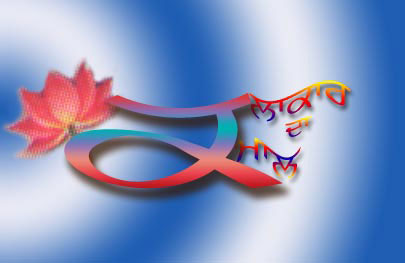
The most appropriate script for Panjabi Language is Gurmukhi. There has been an awful lot of confused connotation of the term 'Gurmukhi'. By sheer mistake and potential influence of folklore many people have been interpreting Gurmukhi as
"That which comes from the Mouth of the Guru"
Now assess this very brief statement carefully. Something spoken can only come out of a mouth for which the Almighty has bestowed the human being with a unique organ called TONGUE. There are a number of vocal chords instrumental in producing a spoken word. We need a script to produce the images of spoken words on a surface with some writing instrument e.g. a paper and a pen. So speech and writing are two distinct aspects of a language. Therefore Panjabi is a language and Gurmukhi its script. Almost all languages and Gurmukhi have two different terms for writing and speaking. English is a language and Roman its script, Hindi is a language and Dev Nagri its script and Urdu is a language and Persian its script.
Contemporary scholars in linguistics have proved that the language of the North-Indian region known as the Punjab is without any doubt the most ancient and the oldest language of the world. As the name and geographical boundaries of this region have been constantly changing so is the profile of its language. The world's oldest scriptural book Rig-Veda was written in this region. It is in the ancient Panjabi, popularly known as Sanskrit.
There are at least more than a dozen different scripts being used to write Panjabi since the Vedic period. In 1947 at the time of independence, the Punjab was partitioned. The West Punjab went to Pakistan and the East Punjab to India. The Pakistani Punjabi is written in 'Shahmukhi' script as a counterpart of 'Gurmukhi'. Again the East Punjab was divided into three parts - The hilly areas went to Himanchal Pardesh and the Southern area was carved out to establish the new province 'Haryana'. The Harianvi Punjabi is 'Jaatu or Bangru' written in Dev Nagri and the Hilly Punjabi is Dogri or Pahari. The new Punjabi Suba is perhaps the smallest Punjab of the history of the land.
The Main Calligraphy Schools of Gurmukhi
1. The Damdami Taxal's various branches
and centres.
2. The Kashmiri School of manuscripts production.
3. The
Chamba and Basohli schools of illustrated manuscripts.
4. The Amritsari School
of Scriptual Naqqashi.
5. The Anandpuri Sampardaik School of Scriptures.
6. The Chhachhraoli Sanstha of Calligraphers.
7. The Paonta Sahib Centre of
poetic calligraphy.
8. The Patiala Tradition revived by Bhai Tarlok Singh
Artist.
9. The Kandhi and Kathgarhi Centres of book scribing.
10. The
Granthi Bagh Ropar Institute of Gurmukhi.
11. The Gurmukhi Museum, Khadoor
Sahib and Goindwal Sahib.
12. The Christian Institute of Gurmukhi, Batala.
13. Various Gurmukhi Schools and Centres of Delhi.
14. The Centres of scribes
in Kapurthala and Sultanpur Lodhi.
15. The Gurmukhi Sanstha of Kaithal &
Sadhu Gulab Dass Centre.
16. Various schools and centres of different sects
using Gurmukhi.
17. Many Centres outside India.
Some Comments on Contemporary Calligraphy
There have been many great calligraphers of Gurmukhi in the past. Some of them were mural painters. The wall of shrines and Royal mansions they embellished have now disappeared. The surviving calligraphy and art of wall paintings is either in a pathetic condition or in most of cases it is subject to our awful negligence. The concrete and marble is rapidly consuming our art relics. Right at the turn of the century Maharaja Ranjit Singh's summer palace at Ram Titwali has been acquired for creating a new dam. The unique art on the walls and ceilings of this temple and the palace will be submerged under the rainy season streams of the Kandhi.
There is no movement to save these most important cultural treasures. The only way to keep the memories of this consummating art is to document whatever is left and bring it on to the Internet for the posterity. This is not an easy task. You need comprehensive resources to get the surviving relics recorded. Our team of dedicated heritage lovers has taken a determined decision to do whatever is possible. The present input is the obvious outcome of initial efforts. We may call it the first phase of conservation and preservation of our valuable heritage.
We are pleased to portray some examples from private collections' treasures and introduce a few contemporary personalities.
1.
Devinder Singh: A Chandigarh based versatile artist of Sikhism is well known for
his paintings appearing in The Punjab and Sind Banks Books and calendars on Sikhism.
He is a master calligrapher as well. The most outstanding of his masterpieces
in the field is the 'Master in Bani',
which adorns this section.
2. Imroz: A great all-round and multi-lingual artist
of world fame who embellished the Shama Magazine during the 50's and 60's has
created the ultimate Gurmukhi Calligraphy through the 'Nagmani' magazine. Some
of his books jacket designs are also outstanding. Recently he created an excellent
title of poet laureate Surjit Patar and Vismad nad Project.
3. Jaswant
Singh Khosa of Malaysia and Gurcharan Singh Lotay of England have calligraphed
the Sikh Scripture, which reflects their love of labour even today.
4. Ishwar
Chitarkar was a great calligrapher of U.K. Bahadur Singh Sathi is treading
on the path of International fame in this field. Dr. C.S.Chan has created
150 calligraphic alphabets and a number of captions.
5. Computer Calligraphy
is growing now days. Prof. N.S.Chadha in Birmingham, English man 'Rangej', who
studied at Patiala, Dr. Kandola (www.5abi.com) and many others are working
very hard in this field. Most of their work is available on the Internet.
6. It is in our knowledge that a lot of innovative work in the field of information
technology has been carried out in the North America and Australia.
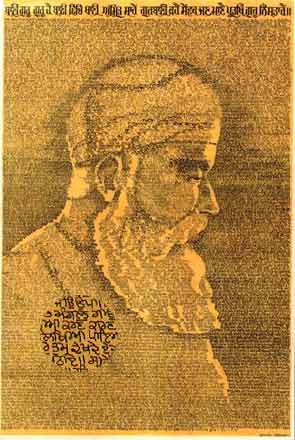
MASTER IN BANI
Renowned artist Devinder Singh's excellent portrait of Guru Nanak, which has been created by writing Japuji Sahib in the Gurmukhi script. Another unique thing is that Devinder has used only the Gurmukhi alphabet without the line on top.
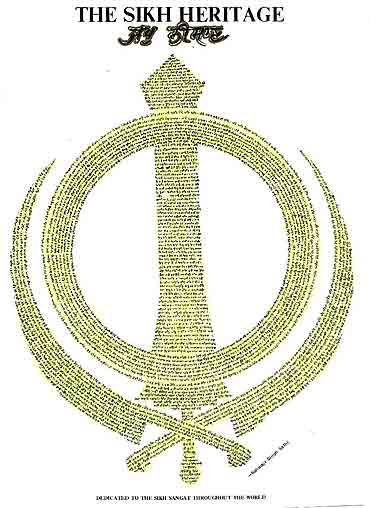
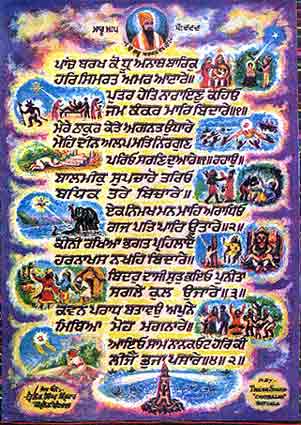
Sri Adi Granth from Sri Anandpuri School.
This unique and historical manuscript was scribed at Sri Anandpur Sahib under Bhai Mani Singh's supervision. It is believed that chief scribe was Baba Hardas Singh Ji. This Holy Granth is well preserved at a safe place.
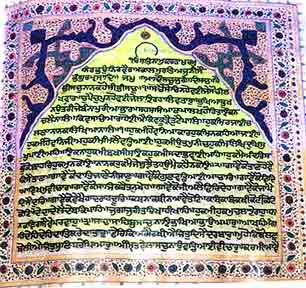
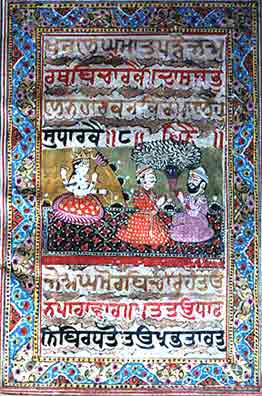
The Kashmiri Kalam
A page from the illustrated and heavily illuminated Janam Sakhi of Sri Guru Nanak Dev Ji by a number of calligraphers, artists and illuminaters of Sri Nagar (Kashmir) who worked under the chief craftsman Missar Jiwan Ram. The project was sponsored by Bhai Mukhi Qandhari of Afghanistan about two centuries ago who spent Rupees two lakh and 25 tolas of gold on the production of this unique manuscript, which is now in the collection of Sikh Heritage Museum U.K.
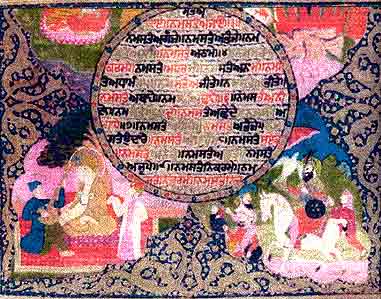
A Seminar Scene from the Manuscript
There are more than 230 Sakhis in the manuscript. Each sakhi has three illustrations. Each picture has three aspects and this dynamic arrangement has been carried out in this monumental work of art and literature. In this scene Guru Baba Ji is addressing a contemporary sage who seeks knowledge and spiritual height of Bhagat Kabir Ji. There are two young lads (attendants) and five other inquisitive VIP's having an audience of the Master.
Outside two Rajas are discussing something under the shade of a symbolic tree while inside the residential quarters two groups of womenfolk areshown in dialogue on the Divine world. The architecture of these mansions portrays their social status.. What a great scene!

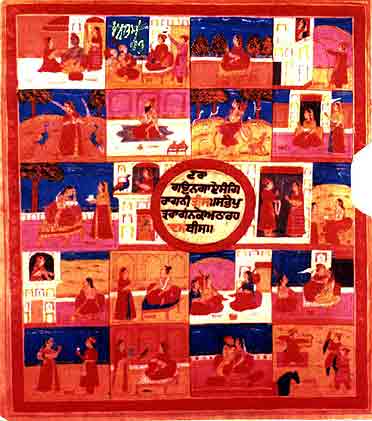
The Last page of the illustrated Sri Guru Granth Sahib Ji, which carries the last verse of the Raag Mala in a tiny circle. The script is in the Paonta Sahib hand.
Some scenes of different Raags as portrayed by the Rajasthani Kavi Alam have been adequately illustrated on the page which displays the outstanding craftsmanship of an unknown book illustrator of the 18th century.
Rare Tika of Mokh Panth Parkash
Sadhu Gulab Singh belonged to the Udasi & Nirmala traditions. His monumental work was scribed by a team of Kaithal School of Gurmukhi. A contemporary artist Atam superimposed <on the original text. He hasn't destroyed the real work as his creatiive and innovative superimposing was on a separate transparency.
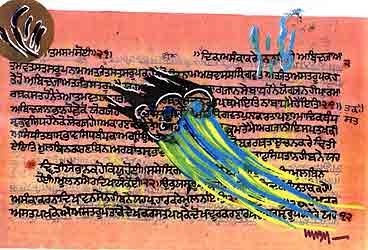
Dynamic Blending of Mokh Panth Parkash
The final of Sadhu Gulab Sing and Atam's divine combination says- "nwnk gurU goibMd isMG - XoDy blkwrI" -"Guru Nanak and Guru Gobind Singh proved dauntless and great warriors on socio-spiritual scene of India".
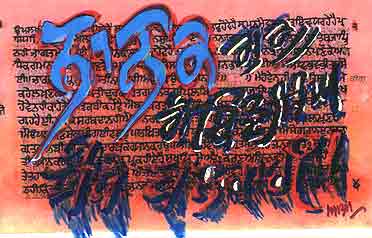
Two in One
Here is a masterpiece of a calligrapher of the past and illustration of a contemporary artist. On top is the Sur Patti or the ovtaves of the popular kirtan instrument, the Harmonium. The superimposed verse says "kwly Aqy ic`ty, koml Aqy qIbr [ Gul jwE gurU Gr ivc vwjy dy surW vWg ]" ("Black and white, soft and flat notes-Dissolve yourselves in your Guru -as these notes glide in the harmonium.") What a unique blending of two ages and two arts in this work!

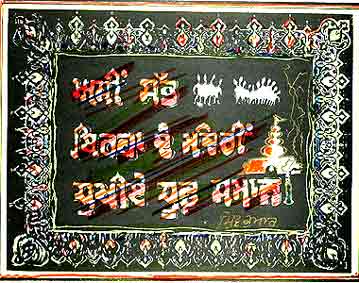
ART & Calligraphy of Dr. Channan Singh Chan.
Here he has illustrated a part of a verse (share) of the great Punjabi poet Shiv Kumar Batalvi
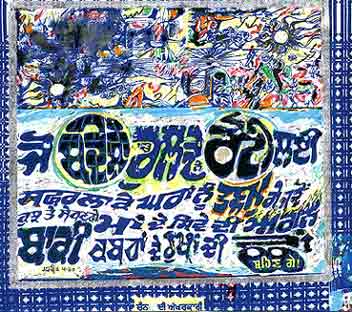
Calligraphy and art of Dr. Chan
Verses of poetry of renowned poet Surjit Patar.
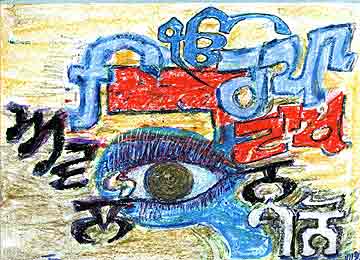
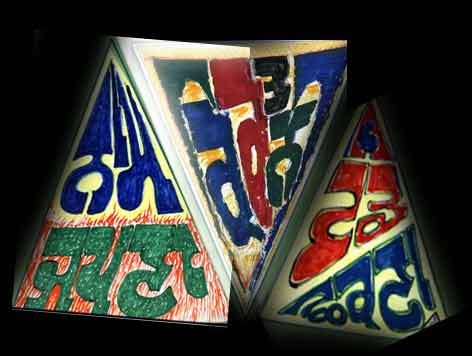
A calligraphy of the Damdami School of Calligraphy.
Canto33 of Prophetic Puran. Written and translated by Bedi Ganesha Singh. This very rare piece was scribed by the great calligrapher of Amritsar School, Bhai Mehtab Singh. Both the text and the style are very rare and now it has become a collector's item.
(Most of the above work of art is the courtesy of Sikh Heritage Museum)
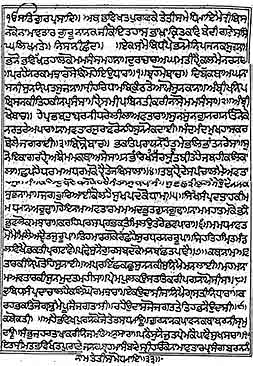
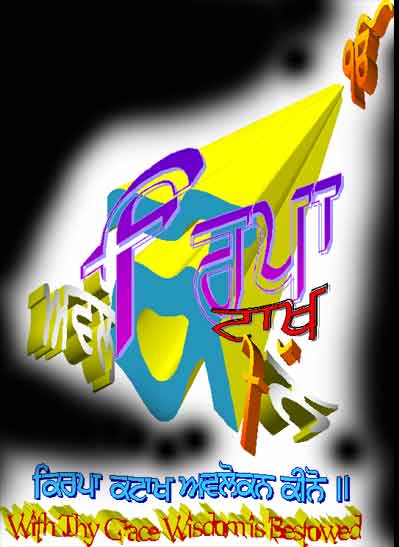
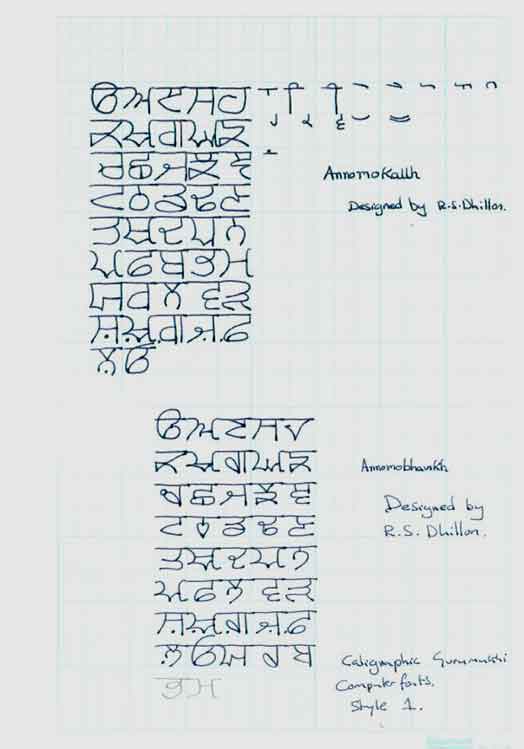
A new calligraphy style font of Punjabi being perfected by Rupi Dhillon - a contemporary writer and artist.
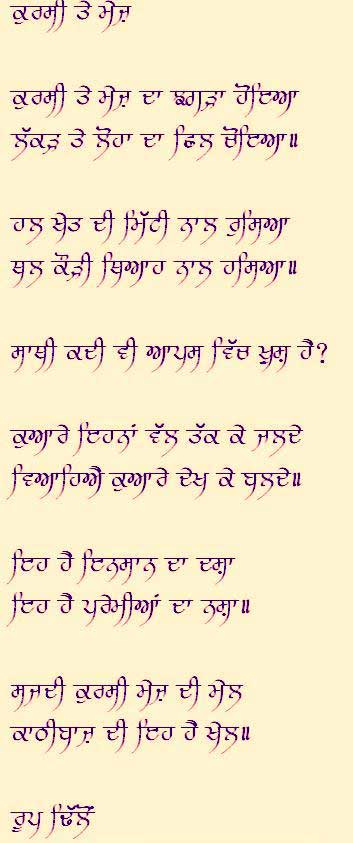
Another version of Punjabi calligraphy by Rupinder Dhillon:-
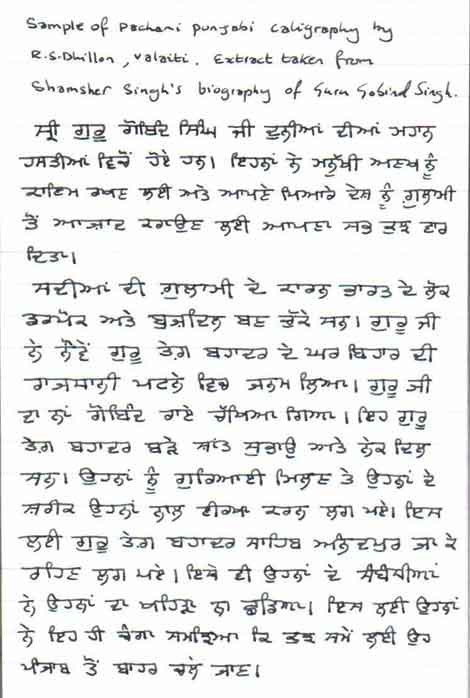
THE FOLLOWING WORK OF ART CALLIGRAPHY WAS PERFECTED BY LATE DR. CHANNAN SINGH CHAN - WE PRESENT SOME OF HIS IMMACULATE AND GENIUS WORK
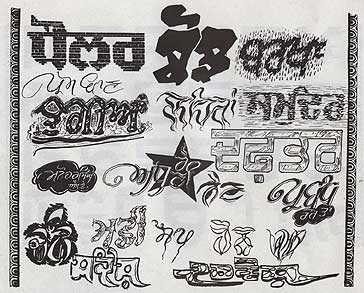
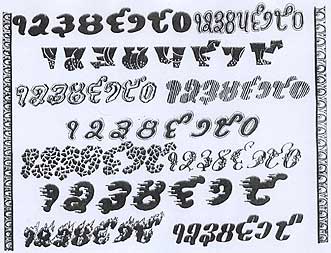
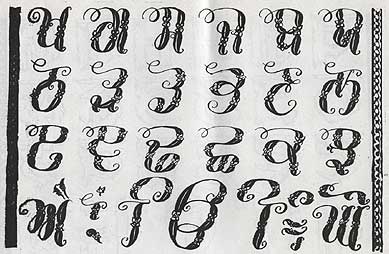
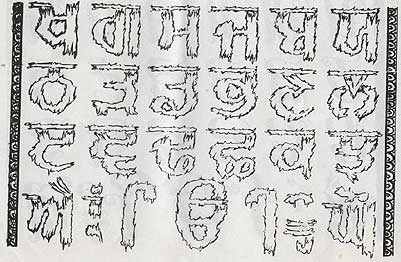
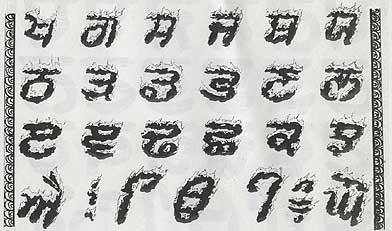

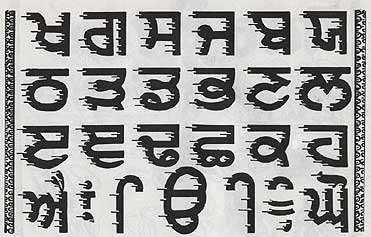
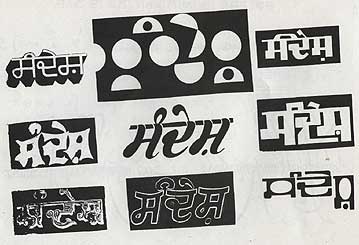

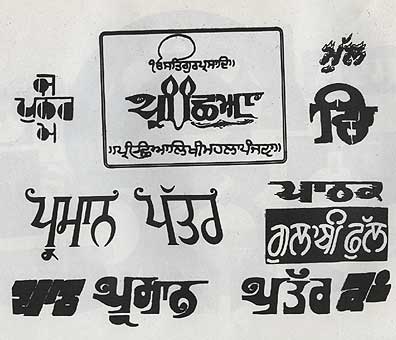
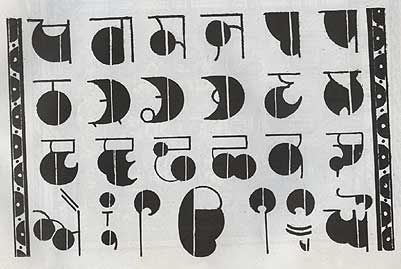
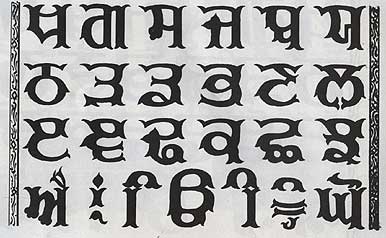
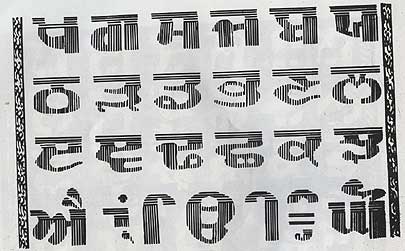

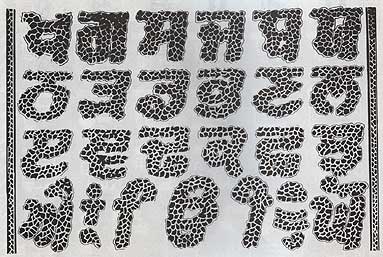
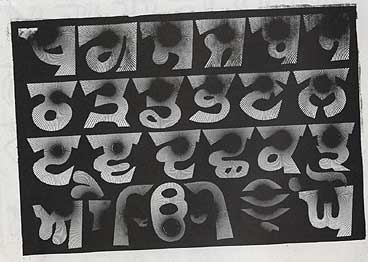
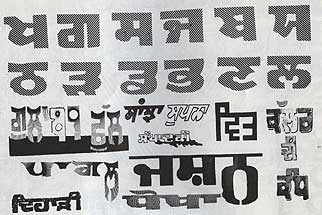
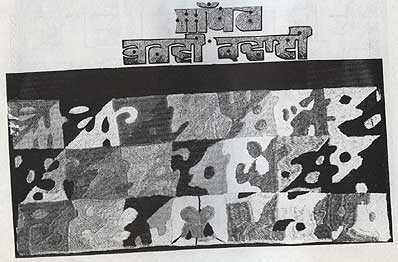
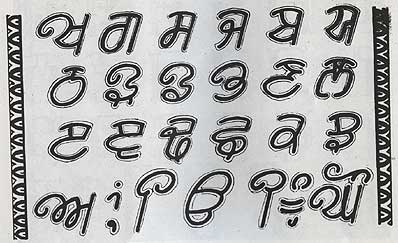
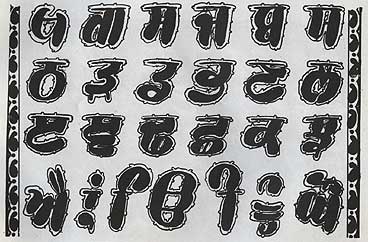
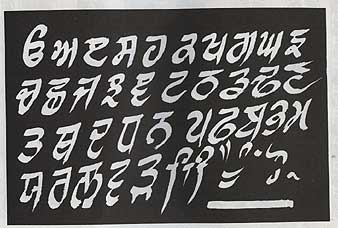
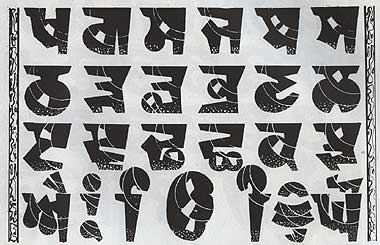
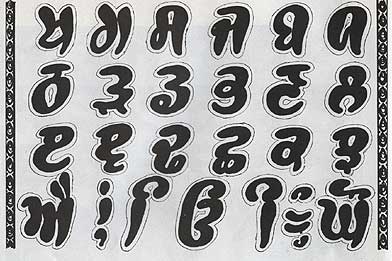

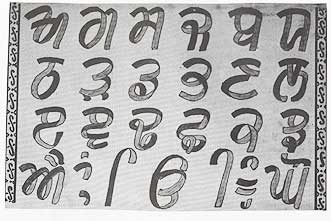
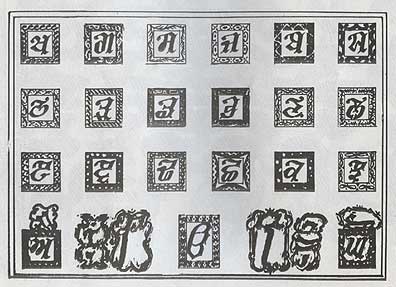
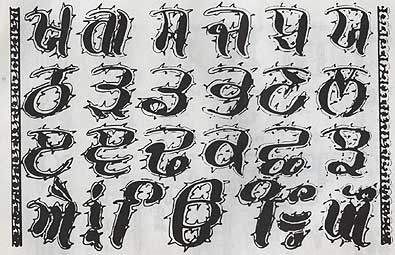
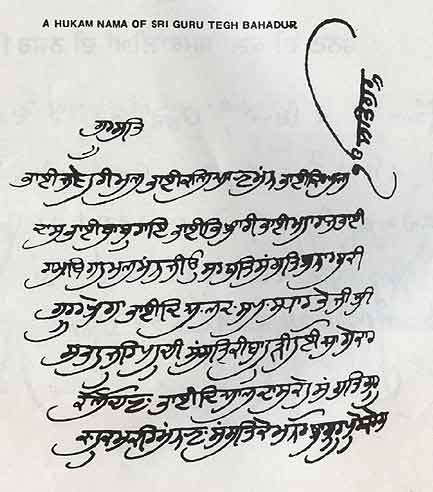
The Flowing hand of Guru Teg Bahadur can be seen in this 'Hukamnama'
